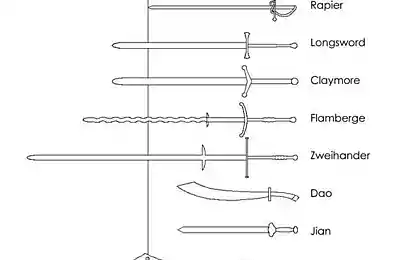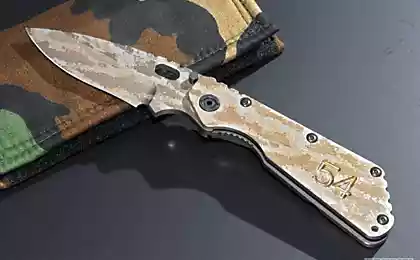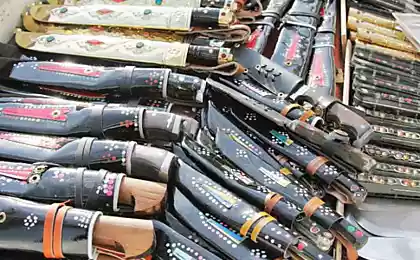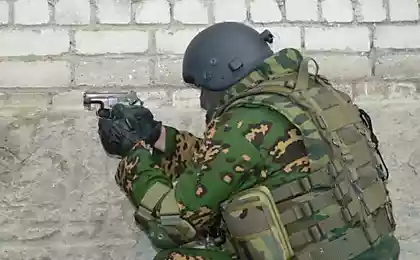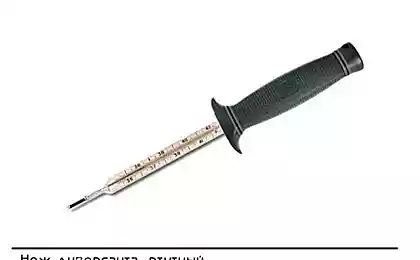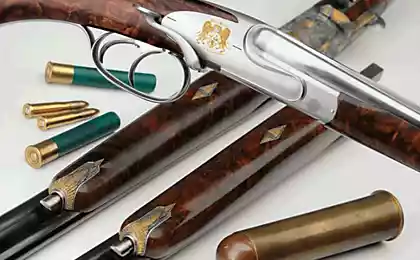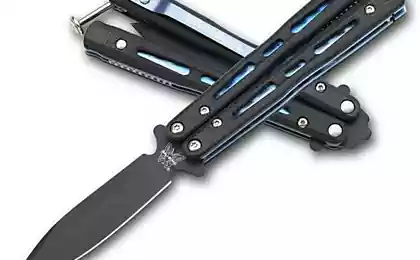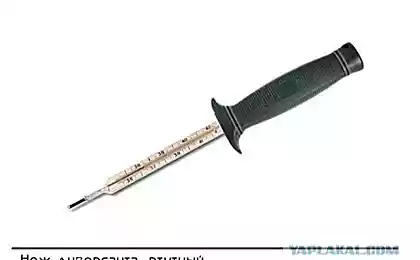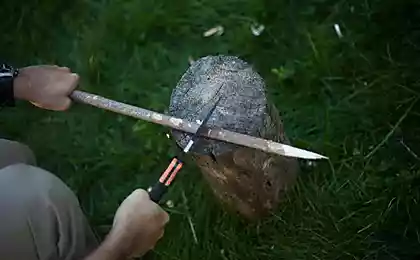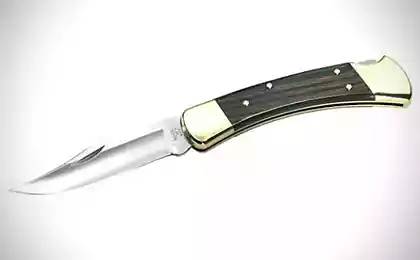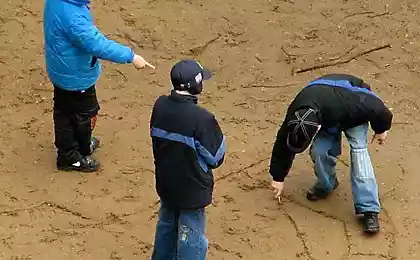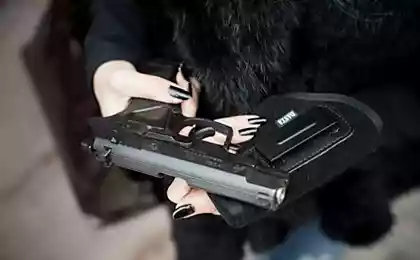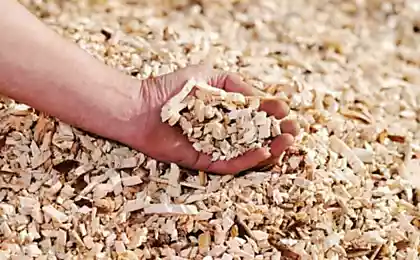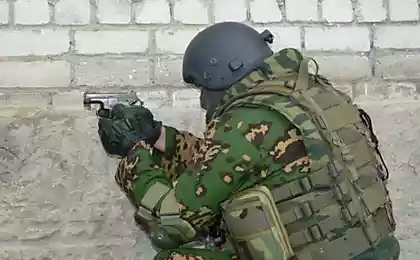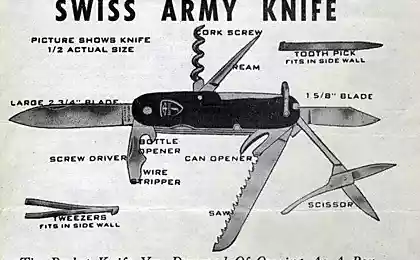5162
Philippine butterfly knives
Taal - a small Philippine town, located 100 kilometers south of the capital - Manila. In this post you will learn where and how it is made famous Filipino butterfly knives.
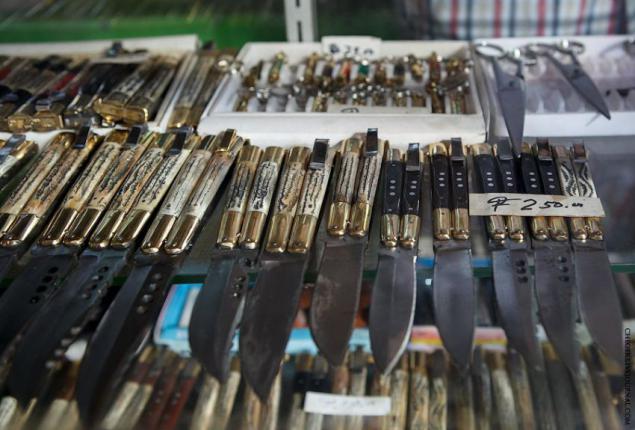
Stops on Buandia many, most buses are in the province of Laguna (Laguna) and Batangas (Batangas). Taal is one of them - Batangas. This tiny town is known primarily by the fact that it was invented here (in one version) and made the most famous Filipino knives - balisong, better known to us as the butterfly knives. More Local call them "29».
Why are they called "balisong"? Because there Taal area (barangay), which is called - Balisong. Though maybe it's from the Philippines "broken horn". Almost all are engaged in manufacturing of these knives. Today my story is just about the place, about how to make these same knives, and not only those - I will try to cover almost all the national knives this island country.
Boarded the bus at 7 am, we had hoped to be in Taal hours to 10. In the bus we rode a few tourists who are likely went to the famous Taal Volcano, which is located near the town of the same name. It is the smallest active volcano in the world, remember I told you about him?
On the way, as usual in the Philippines, at each stop on the bus jump merchants - who with sweets who peanuts, some with water, and someone shouts permanent bukopay, bukopay - coconut cake. By the way, a pretty tasty stuff.
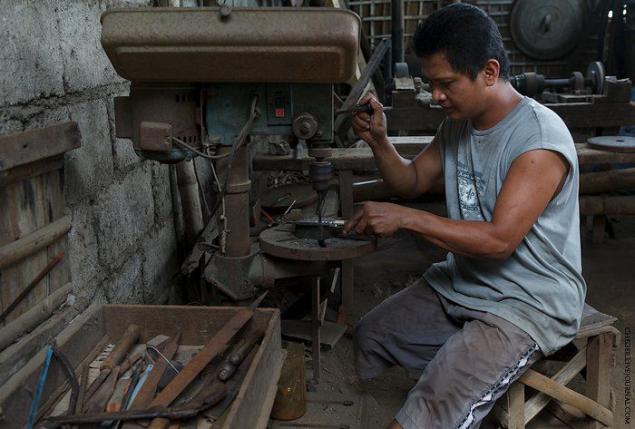
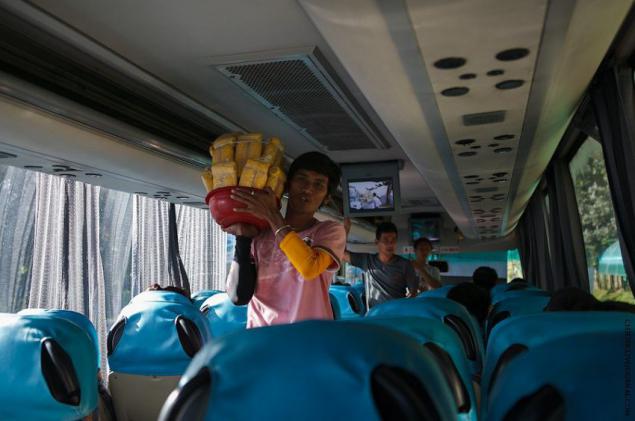
Double-endearing, but never conquered Mount Makulot. Next time I will Climb to its top!
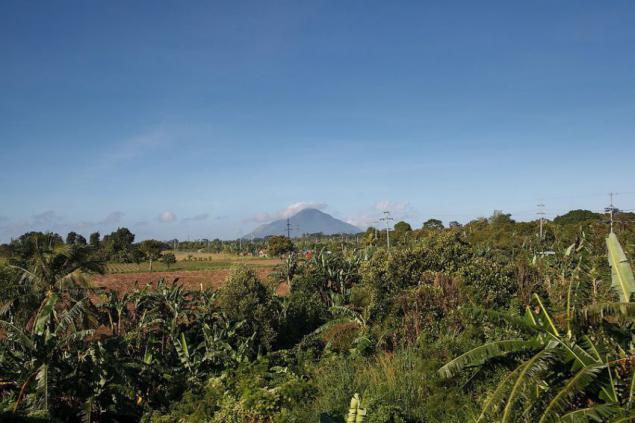
As we expected, these poor 100 kilometers of bus mastered only 3 hours! After jumping in front of the entrance to the city, we immediately came upon a store knives - then there just was not! However, most of them - stylized various Asian weapons - they were not interested in me. I wanted to buy a simple, this machete that is so common on the islands, it is such as is accorded to the population, and not a souvenir sword. Just I wanted to buy a simple KARAMBIT and, of course, balisong.
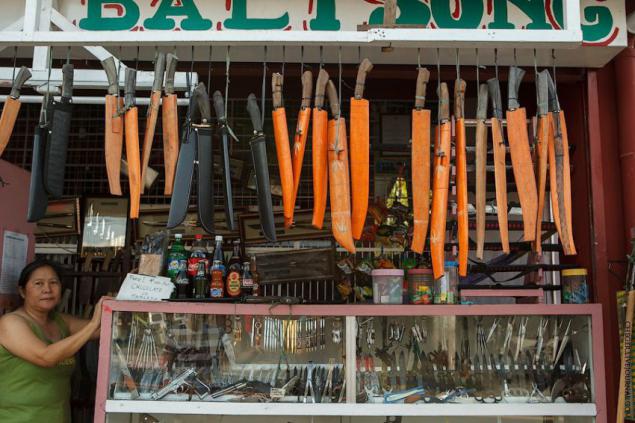
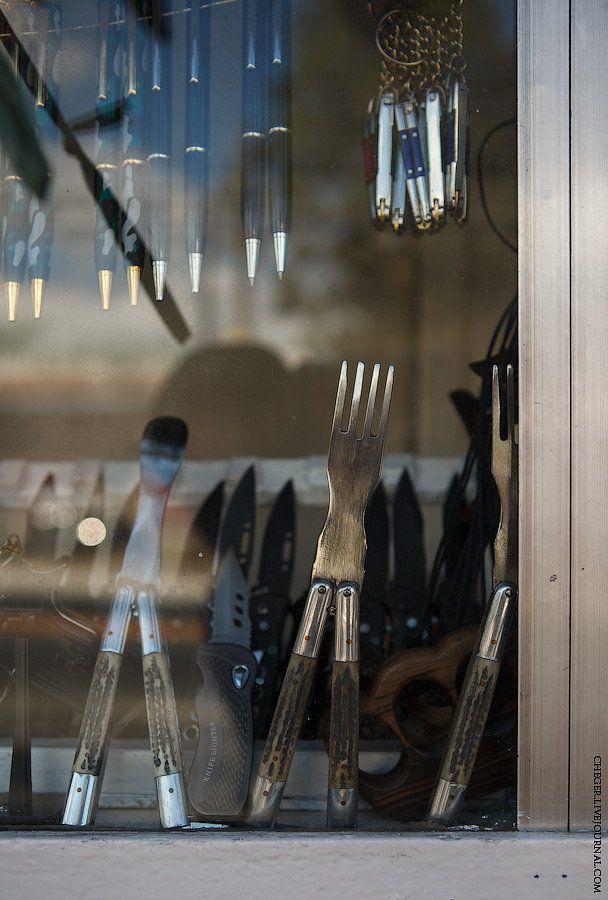
There was quite a lot of shops along the main road, so we decided to first get around some of them and see the range. On the road in many places are some vegetables, I did not understand it - the first time is seen. Actually, it looks like green tomatoes.
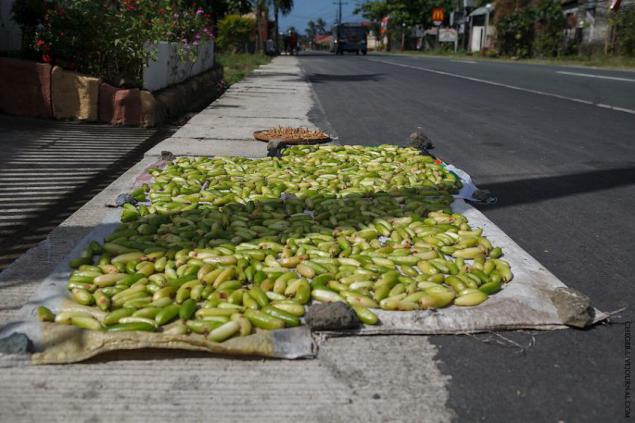
The eponymous bridge
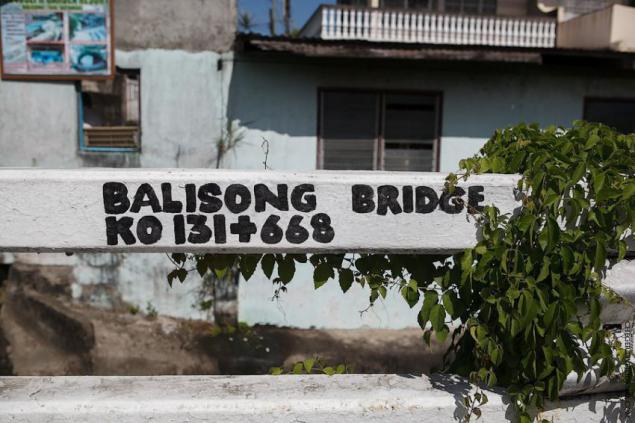
The main purpose of my visit was still a cottage industry of these very balisong. However, in the first, the biggest store clerk once we categorically refused to disclose the location of the master. It is not clear for what reasons. No, and that's it!
As you razmerchik?
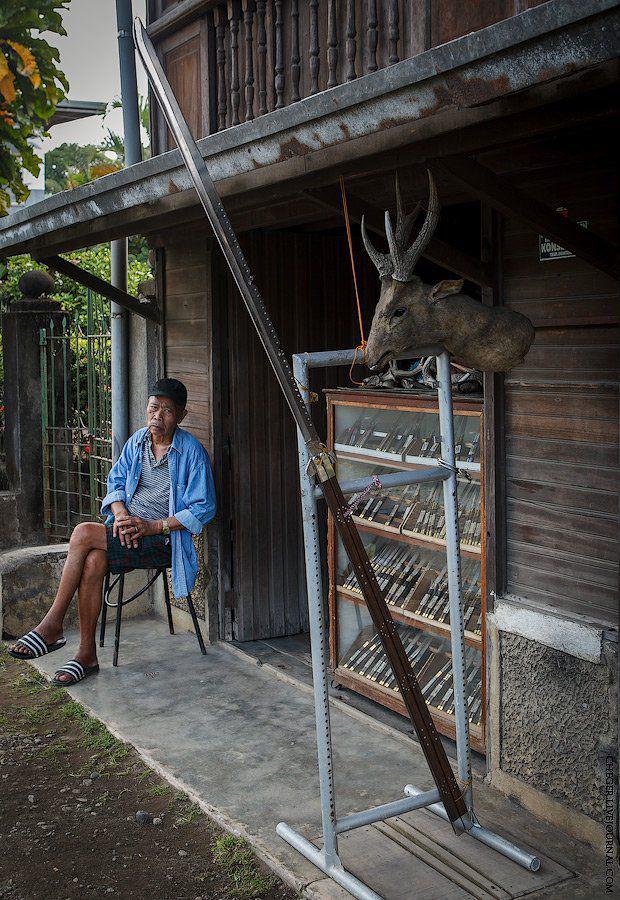
But for one of the following counters he was the master himself, who showed us their work - it was the only store where they were presented with a really high quality works made of good stainless steel. But the prices were appropriate here. Here's the knife I liked most of all, its price of $ 120. And it's not the most expensive. For the Philippines, it is incredibly high price.
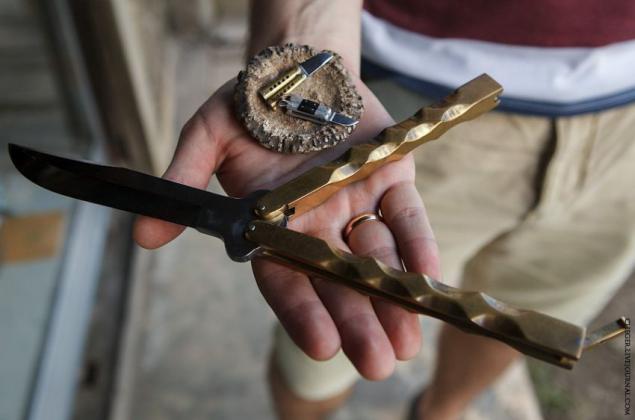
You can buy not only the knife, but here are personal hygiene items, so to speak
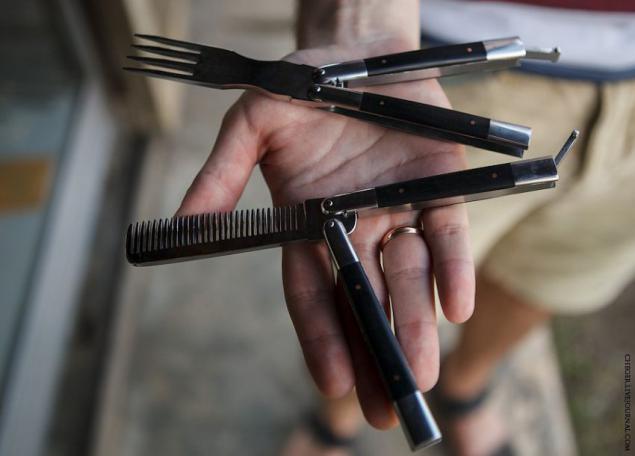
Materials
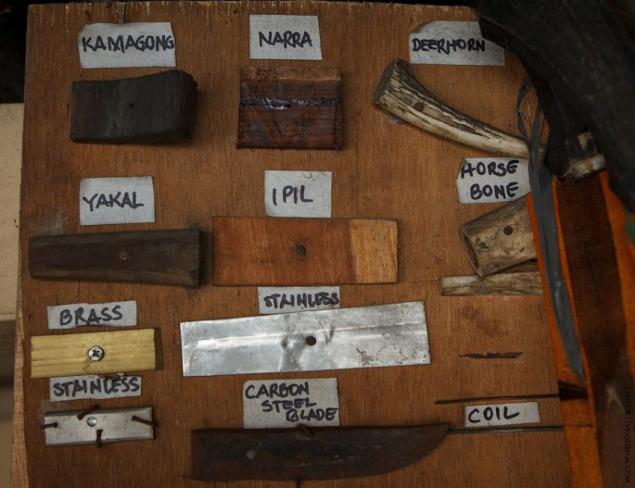
After a brief conversation, Onas, as it turned out his name, showed us how cool he owns these knives.
He told me where now you can see all the stages of manufacture of the easiest balisong - even drew a very detailed map. For this, I handed him Khokhloma spoon - I think he was much more excited than I from his knife. By the way, for a long time I have got such a rule and all advise - carry any with cheap souvenirs and giving ordinary people who somehow helped or simply liked.
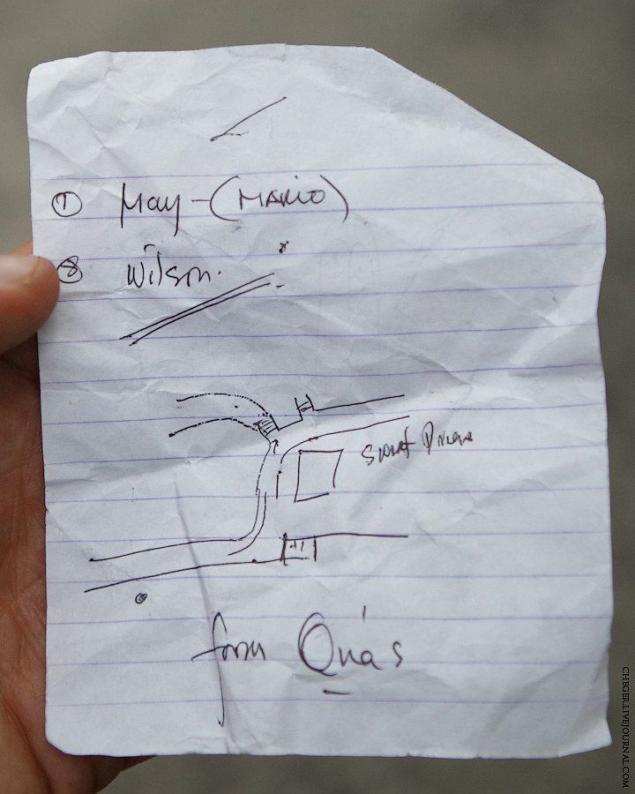
After we said goodbye to our new friends, we had to buy himself knives so go look at the manufacturing process. As planned, I bought a machete, 2 simple balisong, almost the smallest, KARAMBIT very interesting contraption - dulo dulo of kamagonga.
By the way, here is the master for a day can make you a keychain that's right for your key.
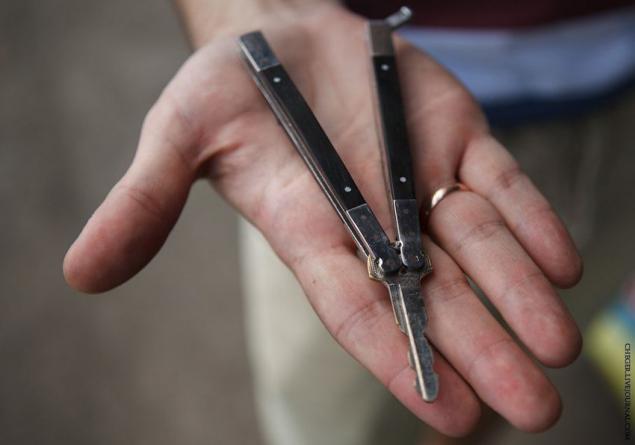
Pens
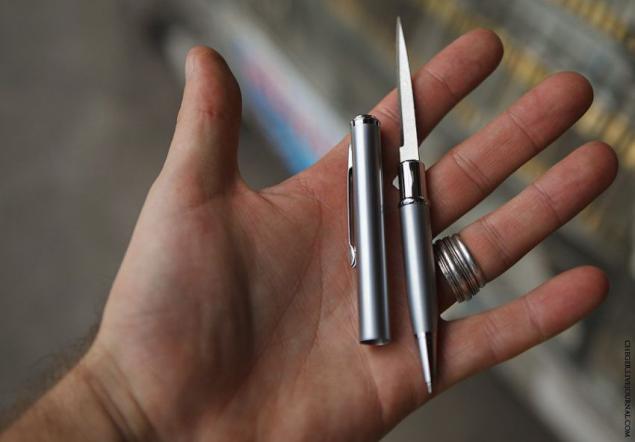
Pack everything in a backpack, we scheme, which we painted Onas very quickly found a shop. Before the show the manufacturing process of balisong, I would like to talk a little bit about the knife itself.
About that, where did butterfly knives, there are two theories - Philippines, which said that the knife was used more as a ritual since ancient times in the islands, but only after the Second World War, was taken to the United States by the US military and has received wide distribution; and European, which asserts that the Philippines this kind of knife design brought the Spaniards during their colonization. Whatever it was, balisong was, is and remains a Filipino knife. In this article, you can read much more about it
Meet, is Mario, but his name was somehow Mai. He earns his living by making in his studio balisong. Workshop of the most simple and is designed just for one person.
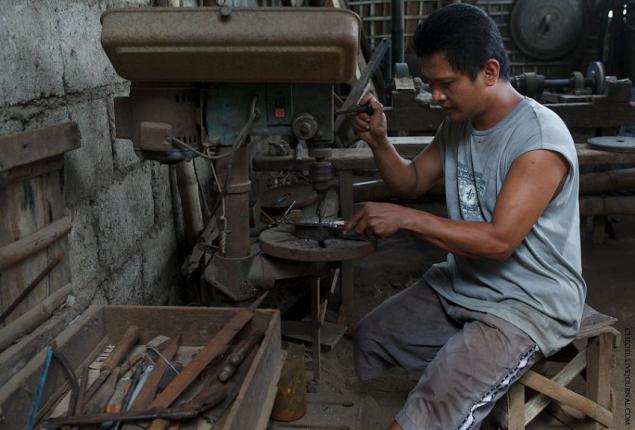
Preparations for the blades, stainless steel here is not held in high esteem
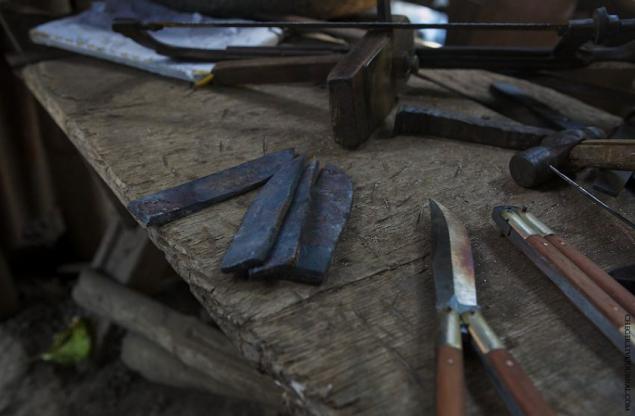
First grind the blade on the stone, the workpiece is given the desired look.
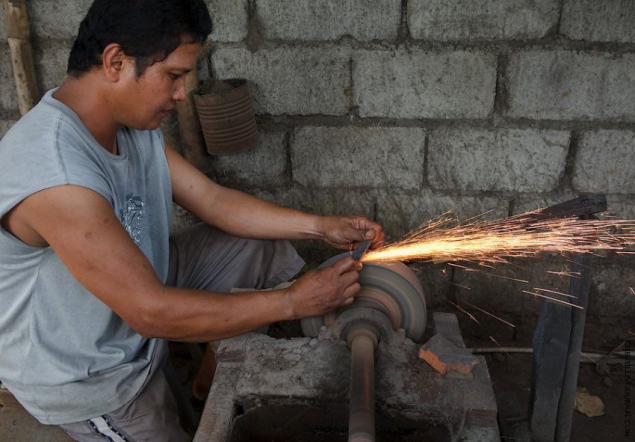
The blade should be done as holes, some to the operation, but for some that give the knife the so-called Rambo-style - a slight indentation on the blade. Drill often blunts and consumables used to the maximum in May.
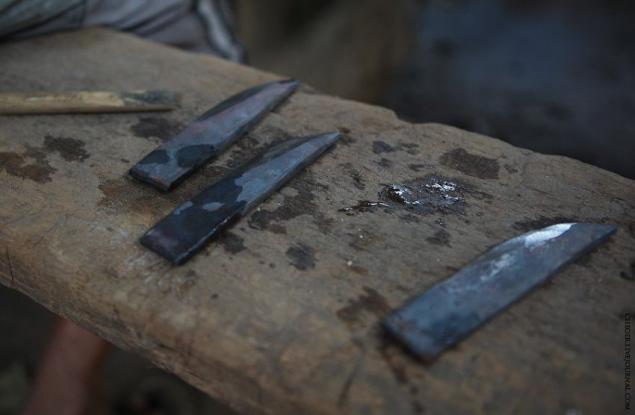

First, small holes are made, and after they made the recess with a larger diameter
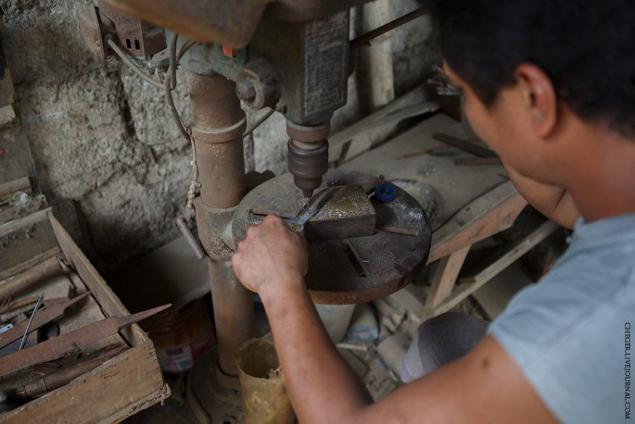
Blanks for pen
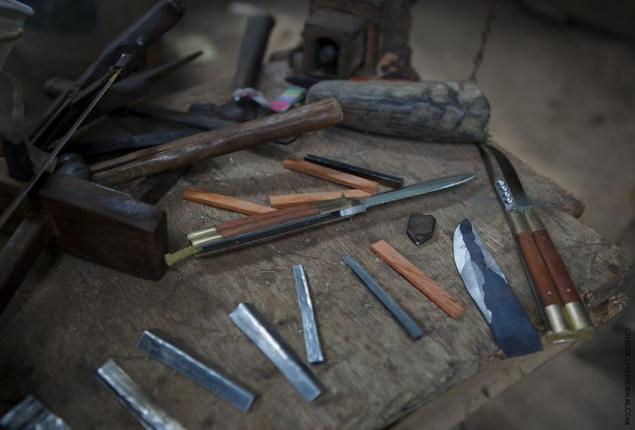
To handle can be used as wood, bone and horn so animals
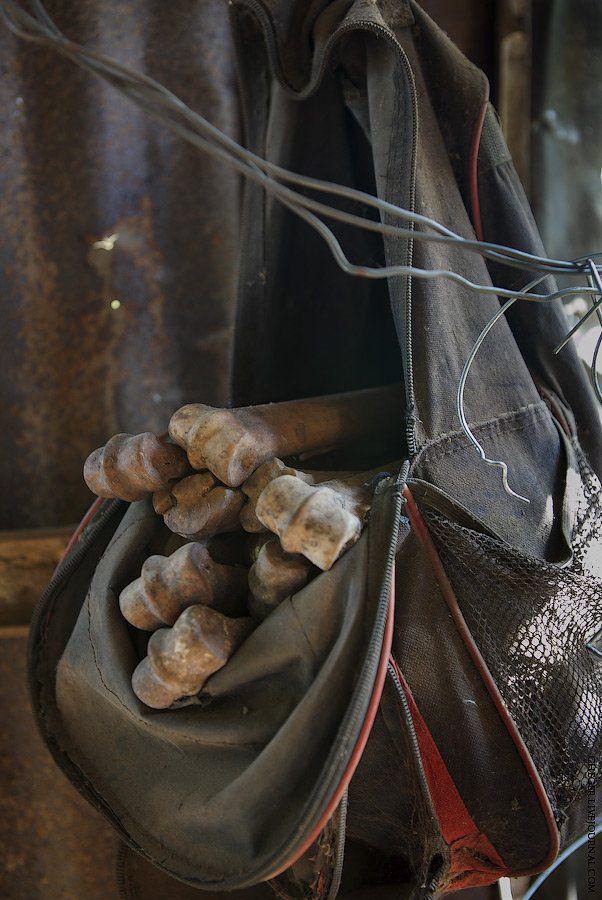
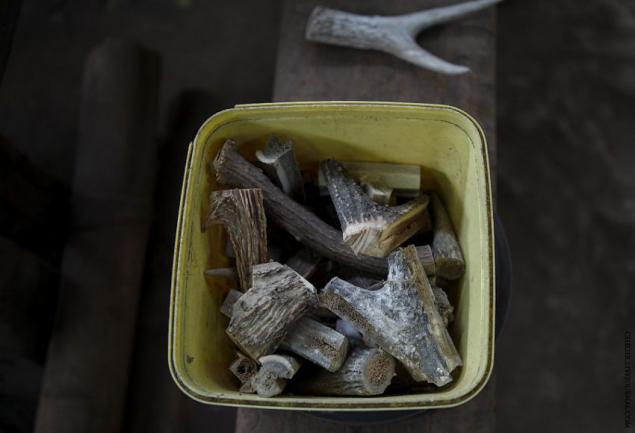
All the holes for the handles are made using a hand drill has
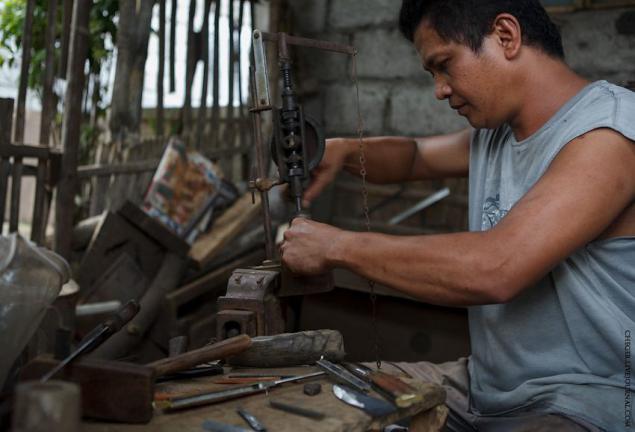
And in this particular case, it is even a little foot
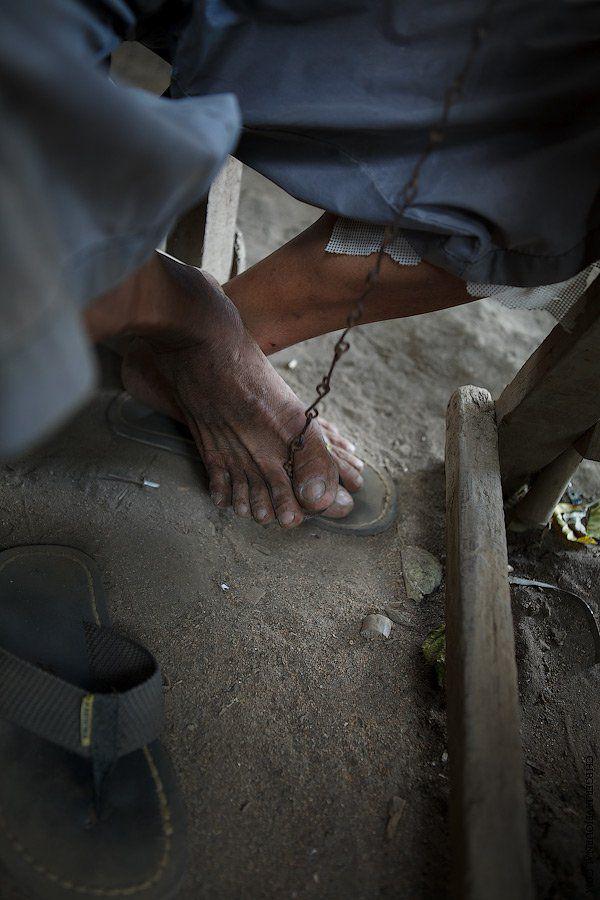
The design is not tricky. Then it all going together and voila - a knife ready
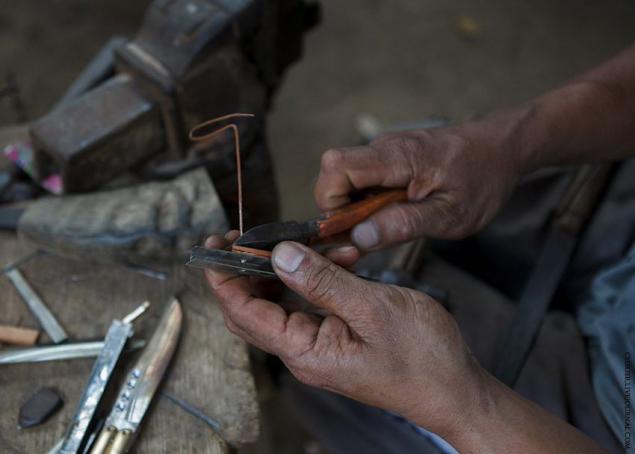
One such knife costs about 500 pesos per day in May makes about 3 knives. In general, 1500 pesos a day - a very good salary for Filipino. The question, he has a regular market.
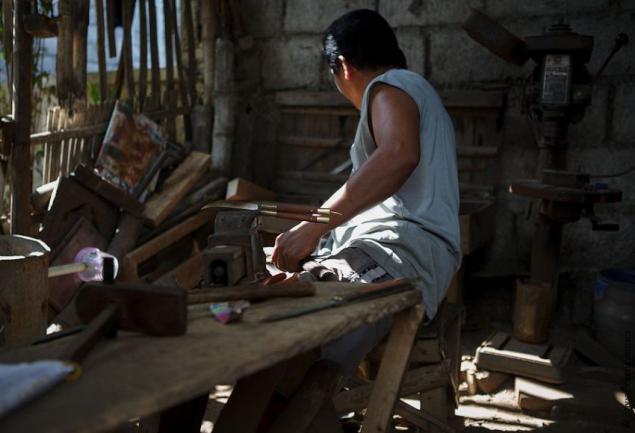
Well, let's go over a lot of the diversity of Philippine cutting tools that I got interested in
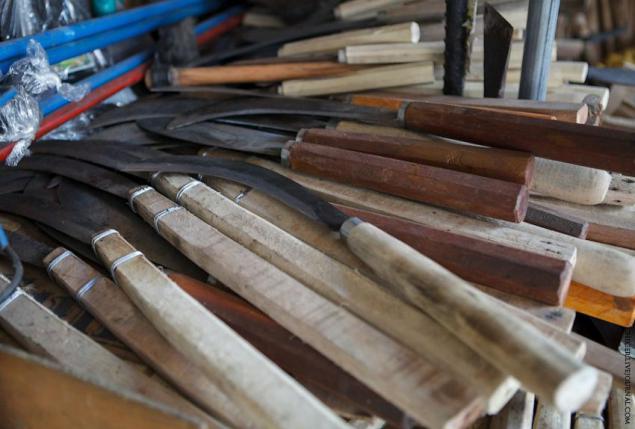
Fish knife, aka Fish knife
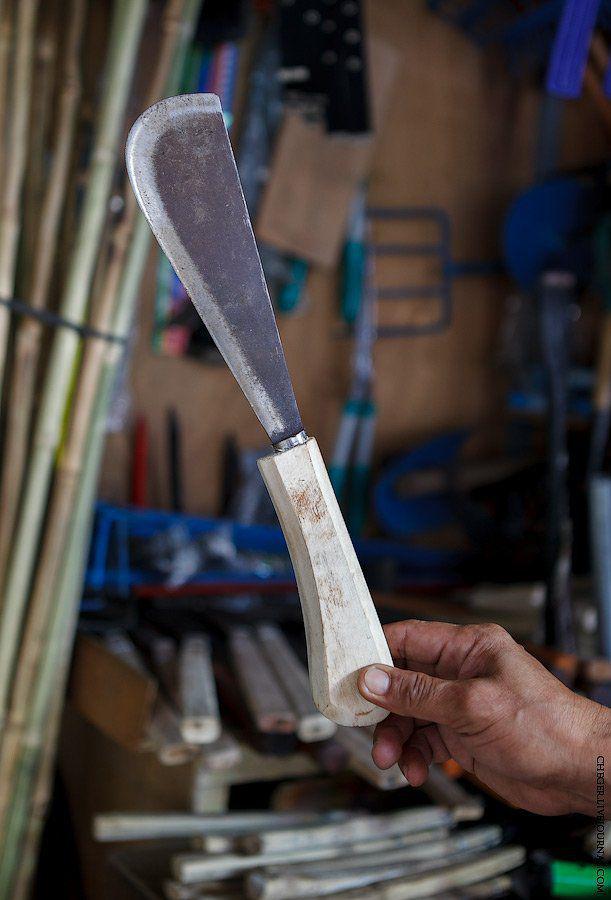
Bolo, he's machete. Bolo themselves a very large number, their shape varies region and it needs. This is mainly used for agricultural purposes
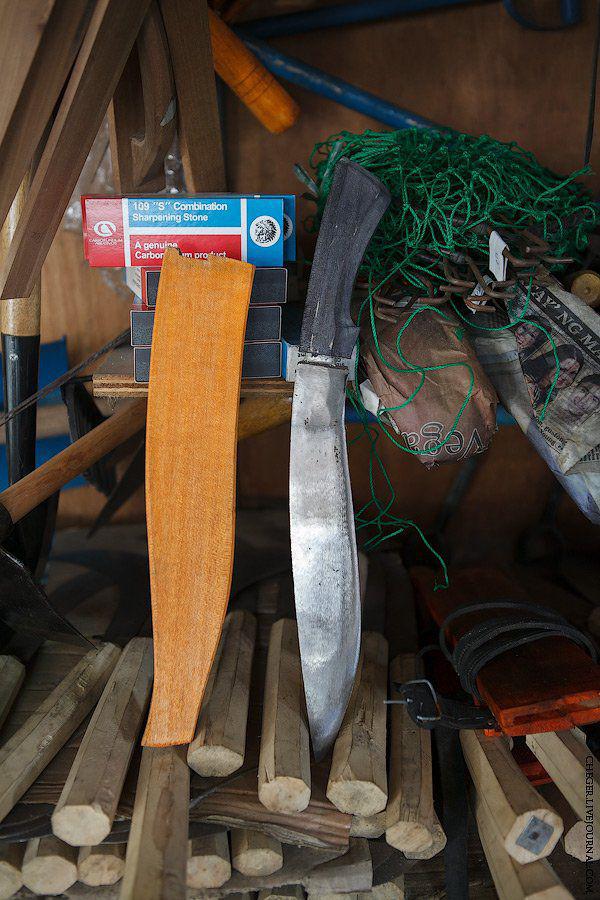
But it is so called Jungle bolo - has been used for the antics of the nature, they can easily have cut bamboo
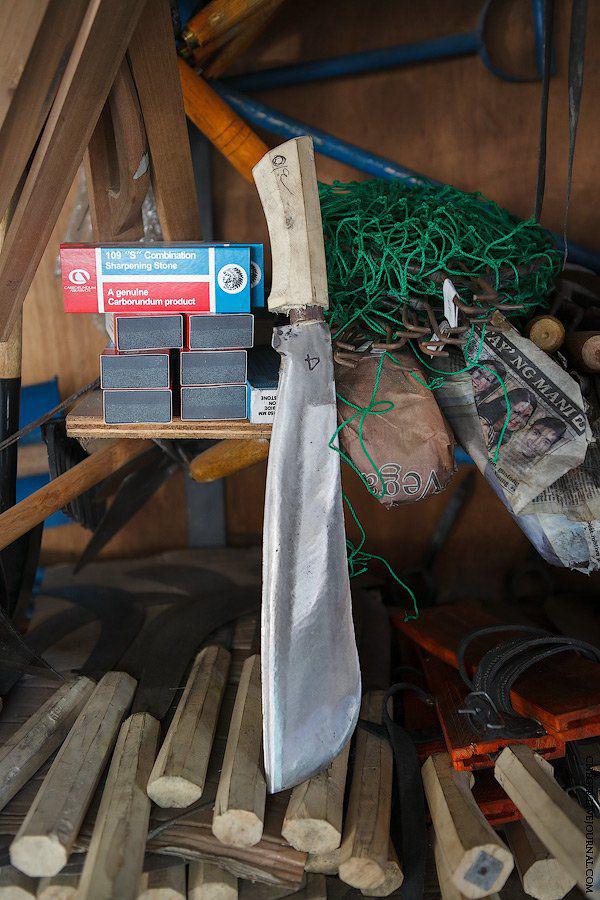
Variety jungle bolo, which I bought
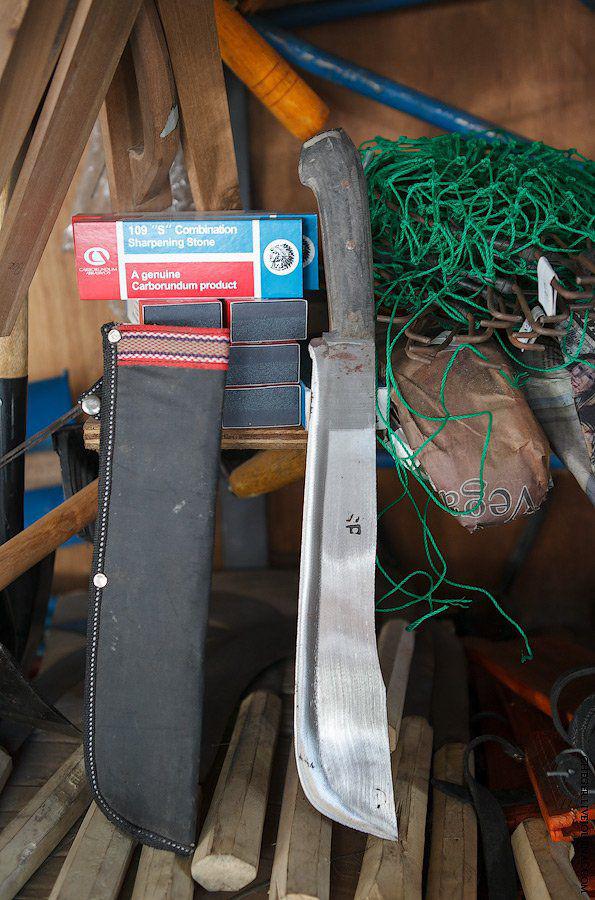
Almost all the knives have a stigma workshop
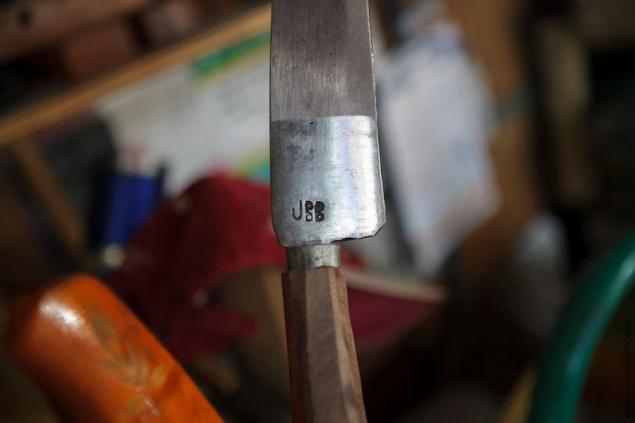
Carit - rice
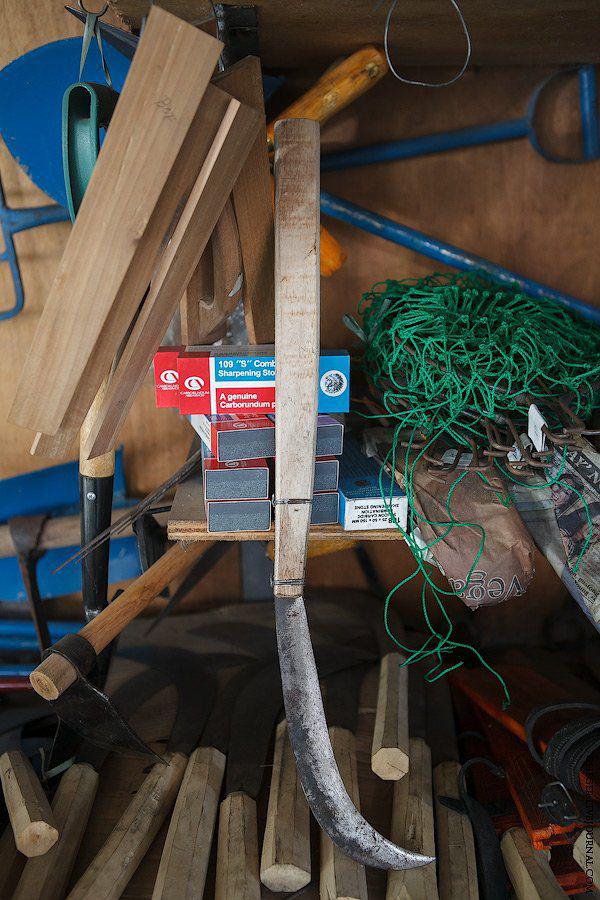
Cawit - for cane
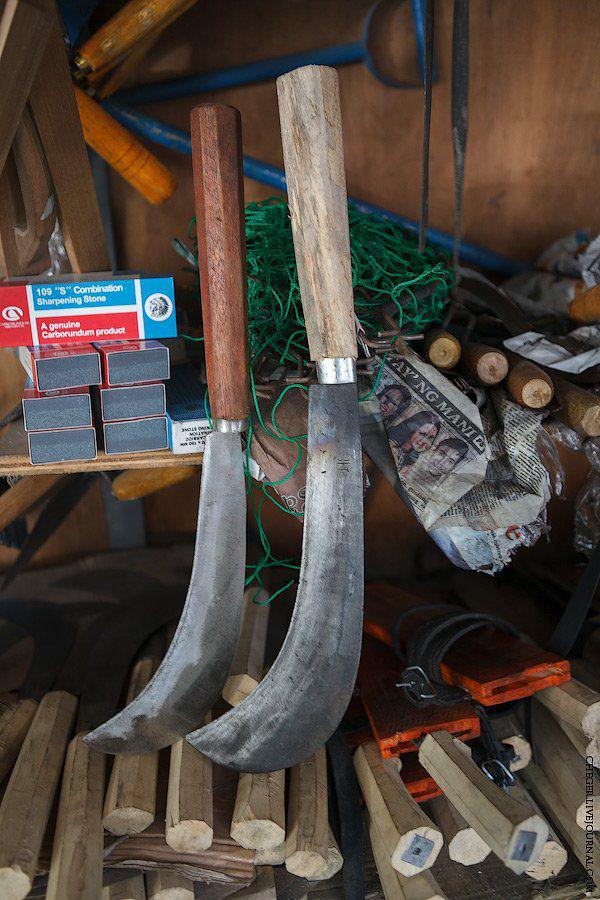
Notorious KARAMBIT, here called karambitom - can also be attributed to the Philippine knife, as it is a terrible weapon originated in this part of the world - the Malay Archipelago and the Philippines
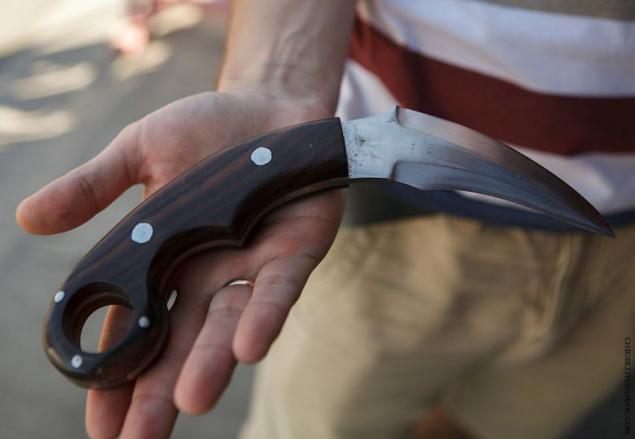
Here's the knife, as I told the saleswoman, they export to US intelligence. Name something like Bahad Dhari, but Google does not say anything about it. Can someone tell me what the knife and what it was originally coined?
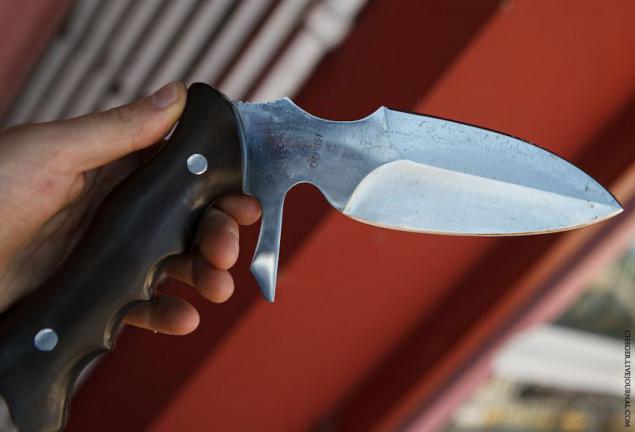
Well, some examples of these knives is actually incredibly often used by people who inhabit both large cities and small villages there
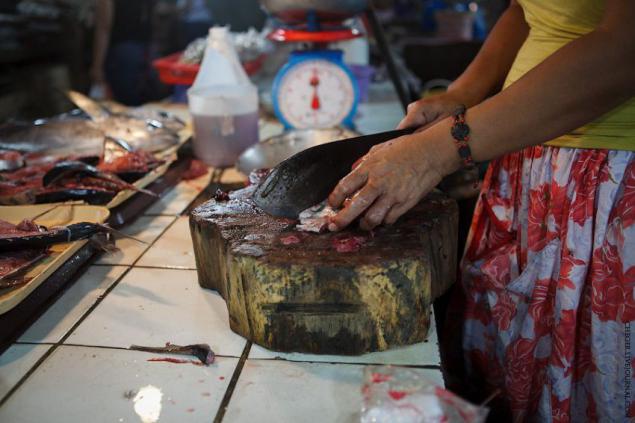
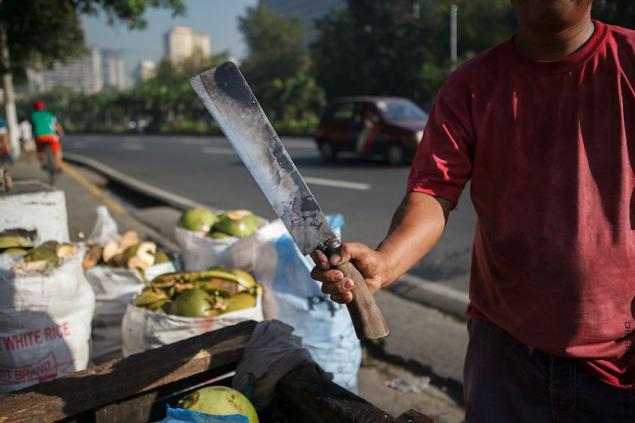
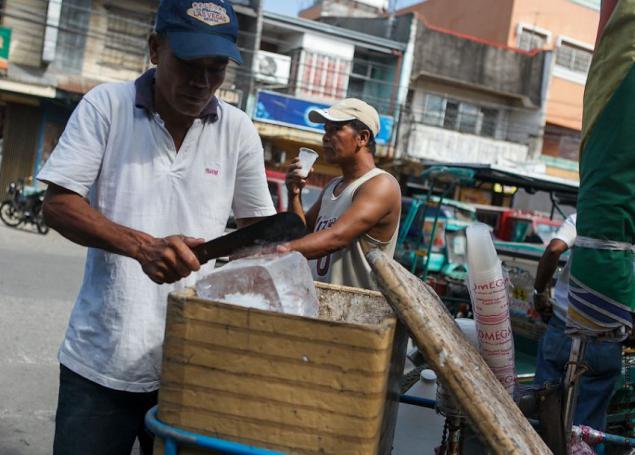
That's all, after the workshop, we took dzhippni and drove to the town of Lemery

There we boarded a van and drove to Tagaytaya: view from the platform at the Taal Volcano
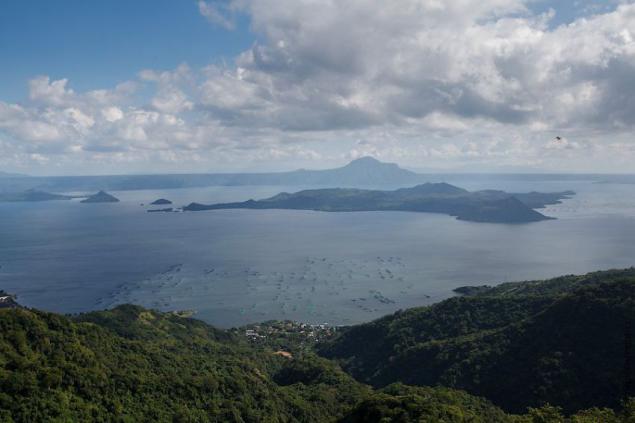
And buy pineapples - 4 pieces for 70 rubles.
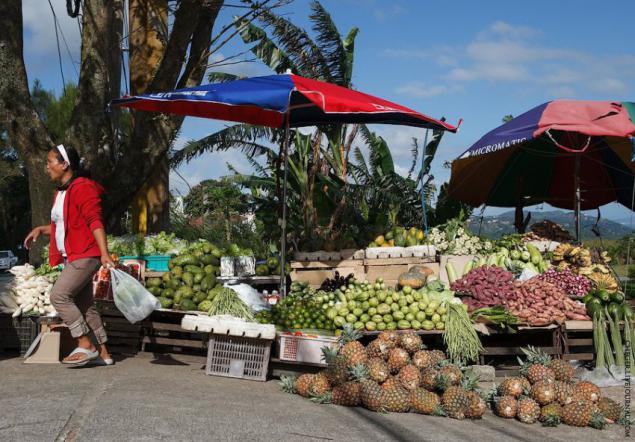
Source: kak-eto-sdelano.livejournal.com

Stops on Buandia many, most buses are in the province of Laguna (Laguna) and Batangas (Batangas). Taal is one of them - Batangas. This tiny town is known primarily by the fact that it was invented here (in one version) and made the most famous Filipino knives - balisong, better known to us as the butterfly knives. More Local call them "29».
Why are they called "balisong"? Because there Taal area (barangay), which is called - Balisong. Though maybe it's from the Philippines "broken horn". Almost all are engaged in manufacturing of these knives. Today my story is just about the place, about how to make these same knives, and not only those - I will try to cover almost all the national knives this island country.
Boarded the bus at 7 am, we had hoped to be in Taal hours to 10. In the bus we rode a few tourists who are likely went to the famous Taal Volcano, which is located near the town of the same name. It is the smallest active volcano in the world, remember I told you about him?
On the way, as usual in the Philippines, at each stop on the bus jump merchants - who with sweets who peanuts, some with water, and someone shouts permanent bukopay, bukopay - coconut cake. By the way, a pretty tasty stuff.


Double-endearing, but never conquered Mount Makulot. Next time I will Climb to its top!

As we expected, these poor 100 kilometers of bus mastered only 3 hours! After jumping in front of the entrance to the city, we immediately came upon a store knives - then there just was not! However, most of them - stylized various Asian weapons - they were not interested in me. I wanted to buy a simple, this machete that is so common on the islands, it is such as is accorded to the population, and not a souvenir sword. Just I wanted to buy a simple KARAMBIT and, of course, balisong.


There was quite a lot of shops along the main road, so we decided to first get around some of them and see the range. On the road in many places are some vegetables, I did not understand it - the first time is seen. Actually, it looks like green tomatoes.

The eponymous bridge

The main purpose of my visit was still a cottage industry of these very balisong. However, in the first, the biggest store clerk once we categorically refused to disclose the location of the master. It is not clear for what reasons. No, and that's it!
As you razmerchik?

But for one of the following counters he was the master himself, who showed us their work - it was the only store where they were presented with a really high quality works made of good stainless steel. But the prices were appropriate here. Here's the knife I liked most of all, its price of $ 120. And it's not the most expensive. For the Philippines, it is incredibly high price.

You can buy not only the knife, but here are personal hygiene items, so to speak

Materials

After a brief conversation, Onas, as it turned out his name, showed us how cool he owns these knives.
He told me where now you can see all the stages of manufacture of the easiest balisong - even drew a very detailed map. For this, I handed him Khokhloma spoon - I think he was much more excited than I from his knife. By the way, for a long time I have got such a rule and all advise - carry any with cheap souvenirs and giving ordinary people who somehow helped or simply liked.

After we said goodbye to our new friends, we had to buy himself knives so go look at the manufacturing process. As planned, I bought a machete, 2 simple balisong, almost the smallest, KARAMBIT very interesting contraption - dulo dulo of kamagonga.
By the way, here is the master for a day can make you a keychain that's right for your key.

Pens

Pack everything in a backpack, we scheme, which we painted Onas very quickly found a shop. Before the show the manufacturing process of balisong, I would like to talk a little bit about the knife itself.
About that, where did butterfly knives, there are two theories - Philippines, which said that the knife was used more as a ritual since ancient times in the islands, but only after the Second World War, was taken to the United States by the US military and has received wide distribution; and European, which asserts that the Philippines this kind of knife design brought the Spaniards during their colonization. Whatever it was, balisong was, is and remains a Filipino knife. In this article, you can read much more about it
Meet, is Mario, but his name was somehow Mai. He earns his living by making in his studio balisong. Workshop of the most simple and is designed just for one person.

Preparations for the blades, stainless steel here is not held in high esteem

First grind the blade on the stone, the workpiece is given the desired look.

The blade should be done as holes, some to the operation, but for some that give the knife the so-called Rambo-style - a slight indentation on the blade. Drill often blunts and consumables used to the maximum in May.


First, small holes are made, and after they made the recess with a larger diameter

Blanks for pen

To handle can be used as wood, bone and horn so animals


All the holes for the handles are made using a hand drill has

And in this particular case, it is even a little foot

The design is not tricky. Then it all going together and voila - a knife ready

One such knife costs about 500 pesos per day in May makes about 3 knives. In general, 1500 pesos a day - a very good salary for Filipino. The question, he has a regular market.

Well, let's go over a lot of the diversity of Philippine cutting tools that I got interested in

Fish knife, aka Fish knife

Bolo, he's machete. Bolo themselves a very large number, their shape varies region and it needs. This is mainly used for agricultural purposes

But it is so called Jungle bolo - has been used for the antics of the nature, they can easily have cut bamboo

Variety jungle bolo, which I bought

Almost all the knives have a stigma workshop

Carit - rice

Cawit - for cane

Notorious KARAMBIT, here called karambitom - can also be attributed to the Philippine knife, as it is a terrible weapon originated in this part of the world - the Malay Archipelago and the Philippines

Here's the knife, as I told the saleswoman, they export to US intelligence. Name something like Bahad Dhari, but Google does not say anything about it. Can someone tell me what the knife and what it was originally coined?

Well, some examples of these knives is actually incredibly often used by people who inhabit both large cities and small villages there



That's all, after the workshop, we took dzhippni and drove to the town of Lemery

There we boarded a van and drove to Tagaytaya: view from the platform at the Taal Volcano

And buy pineapples - 4 pieces for 70 rubles.

Source: kak-eto-sdelano.livejournal.com
